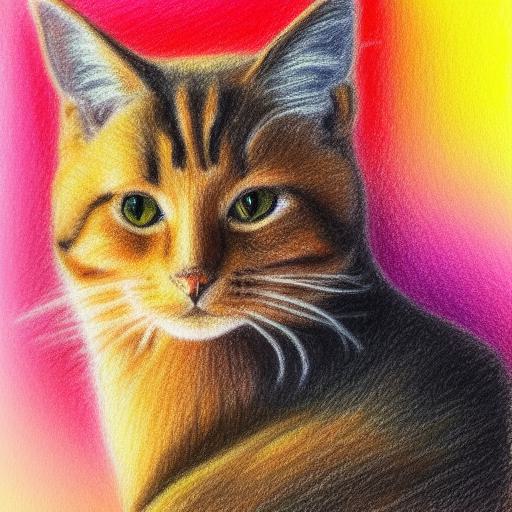Animal Crayon Drawing
This form of drawing is often associated with children’s art and is a popular activity for young children to do. Crayon drawings are created by using wax-based sticks of different colors to create images on paper. The texture and depth of the artwork depend on the pressure applied to the crayon and the layering of different colors.
When creating animal crayon drawings, artists can use a variety of techniques to achieve different effects. For example, they can use cross-hatching or blending to create different textures and colors. They can also experiment with shading and contrast to create a more realistic image. With animal crayon drawing, artists can create any kind of animal they want, from pets to wildlife.
To create an animal crayon drawing, one can start with a pencil sketch to establish the basic shapes and features of the animal. Then, the artist can use crayons to color in the animal, adding shading and texture to create depth and dimension. One of the unique features of crayon drawings is the waxy texture that can be achieved, which can create interesting effects when blended or layered.
Early childhood education
Animal crayon drawing is often used as a tool for early childhood education, as it can help children learn about different animals and their characteristics. It can also be used to teach children about colors, patterns, and shapes. Additionally, animal crayon drawings can be used to decorate children’s rooms or as a personalized gift for family and friends.
Overall, animal crayon drawing is a fun and accessible way to create art, and it can be enjoyed by artists of all ages and skill levels.
How can AI-generated art be utilized?
The use of AI-generated art provides designers with numerous benefits, such as increased efficiency, customized designs, enhanced inclusivity, and broader opportunities for creative expression. By utilizing this technology, designers can produce high-quality visuals rapidly, experiment with various artistic styles, and push boundaries in traditional art forms. Furthermore, the integration of AI-generated art into designs has been simplified by tools like Visual Paradigm Online.
How to write this AI prompt?
Firstly, the prompt specifies that the image is a crayon drawing of one cat. This immediately sets the style of the image and suggests that it will have a somewhat childlike quality to it. The use of crayons as a medium also implies that the image will be colorful and vibrant, with a range of bright, bold hues.
Next, the prompt identifies the artist as Silvia Dimitrova and notes that their work is currently trending on Pixabay. This may suggest that the image will be influenced by Dimitrova’s particular artistic style, which could include a focus on details such as texture and fur, as well as a preference for bright colors and bold lines.
The prompt also mentions that the image is a “furry art” piece, which may suggest that the cat depicted in the drawing will have a particularly fluffy or furry appearance. This type of art often emphasizes the soft, tactile qualities of fur or feathers, and may use techniques such as shading or blending to create a realistic sense of texture.
Finally, the prompt notes that the cat in the image is a ginger cat, which may suggest that the overall color palette of the image will be warm and earthy, with hues of orange, brown, and gold. The use of color can greatly impact the overall mood and tone of the image, and can evoke different emotions or associations in the viewer.
Overall, each individual part of the AI image prompt provides important details and context that help to shape the final image that is generated by the AI. By carefully selecting and crafting each element of the prompt, it is possible to influence the style, tone, and overall aesthetic of the image, and to create a unique and visually striking work of art.


